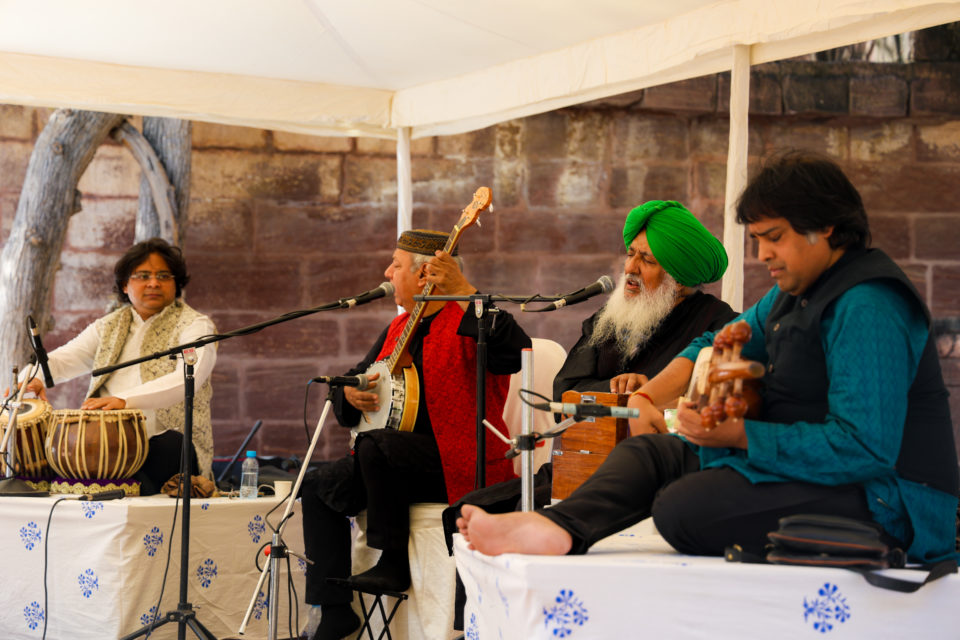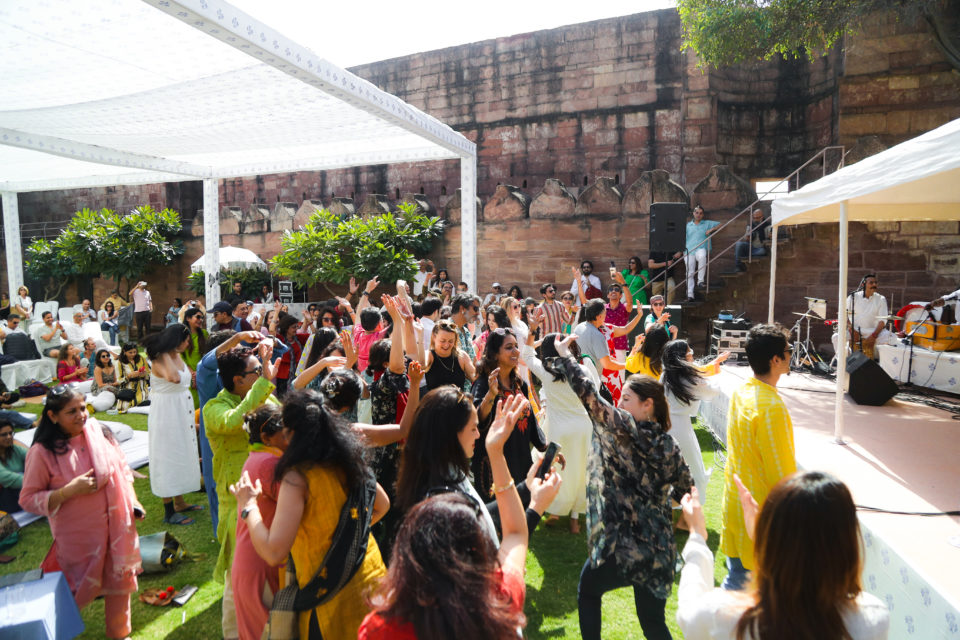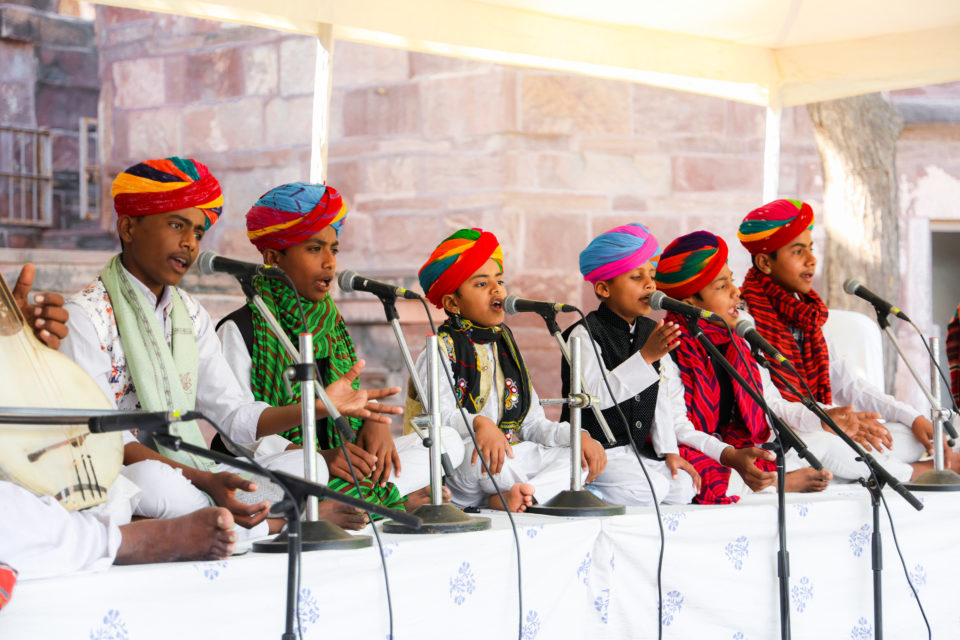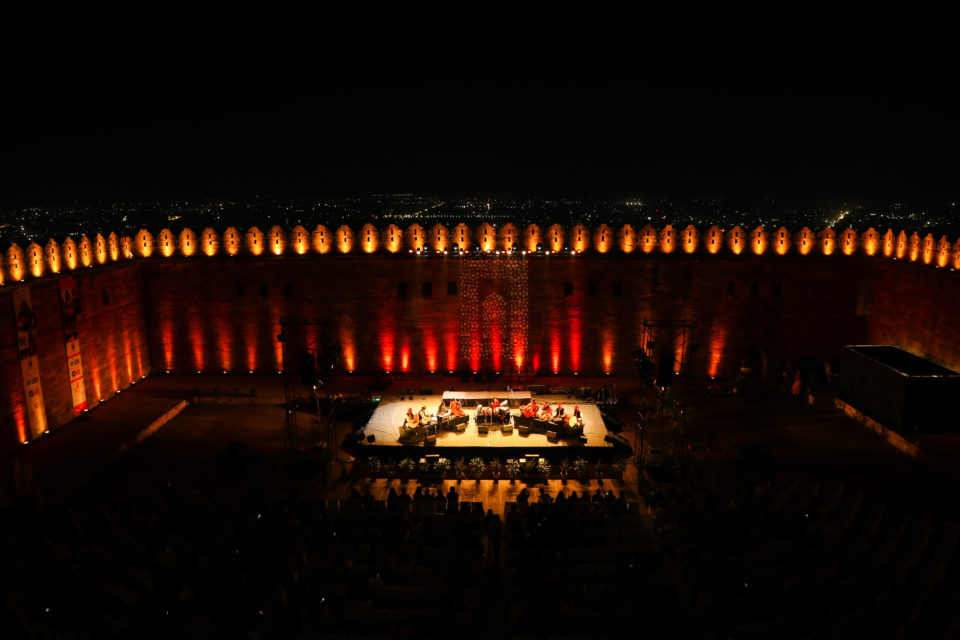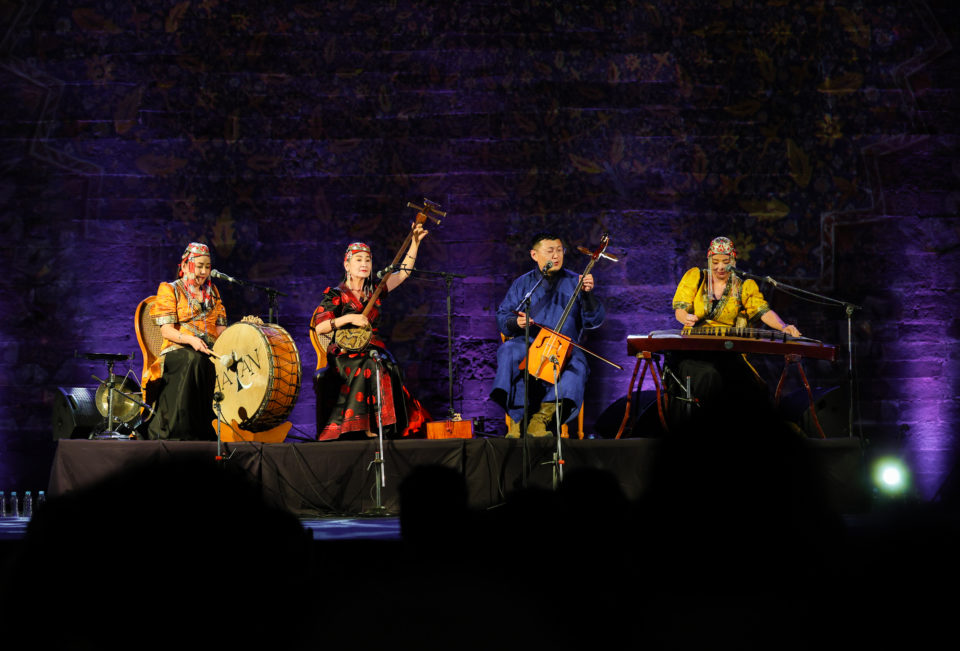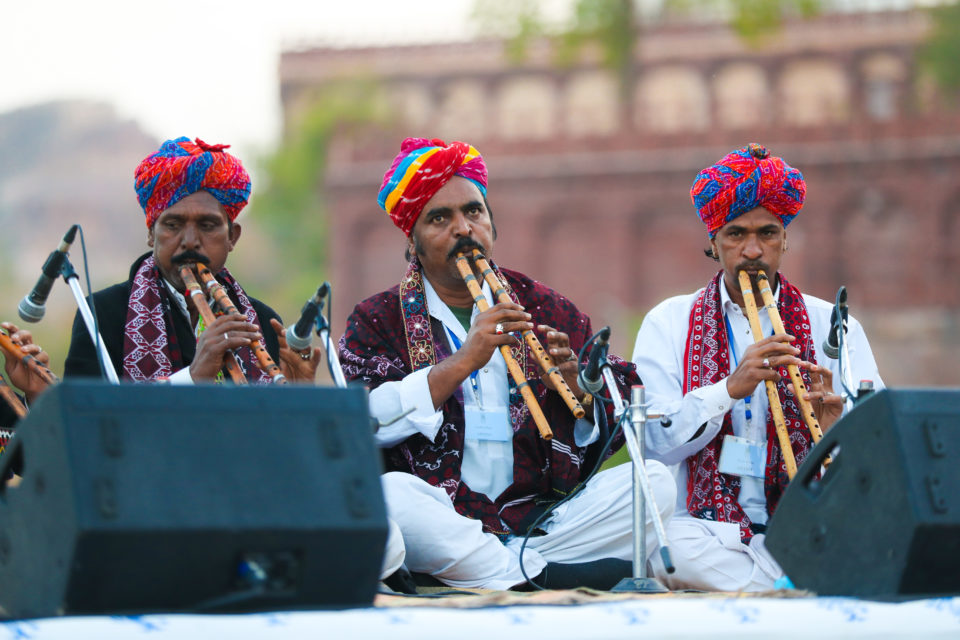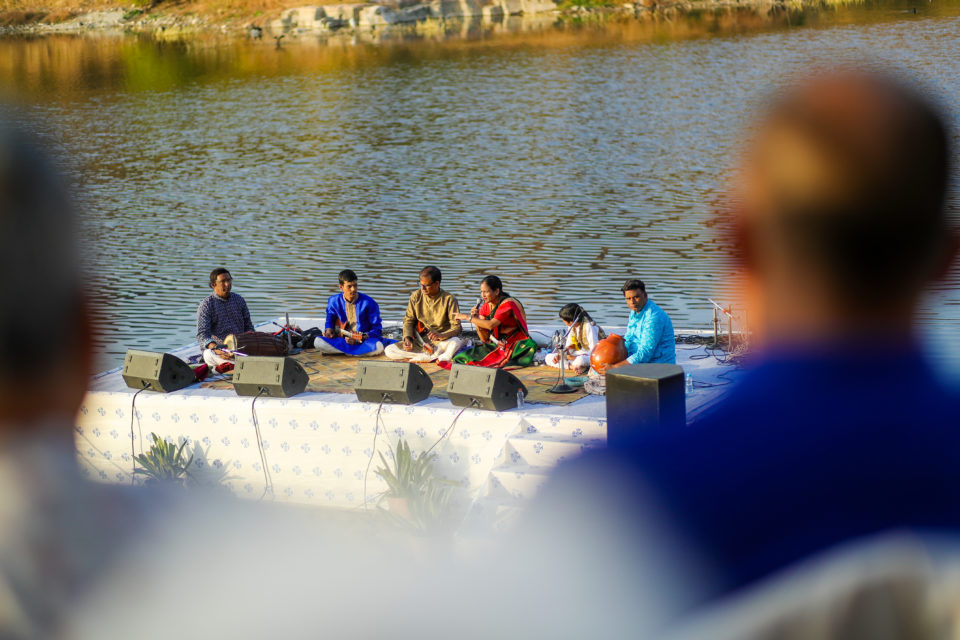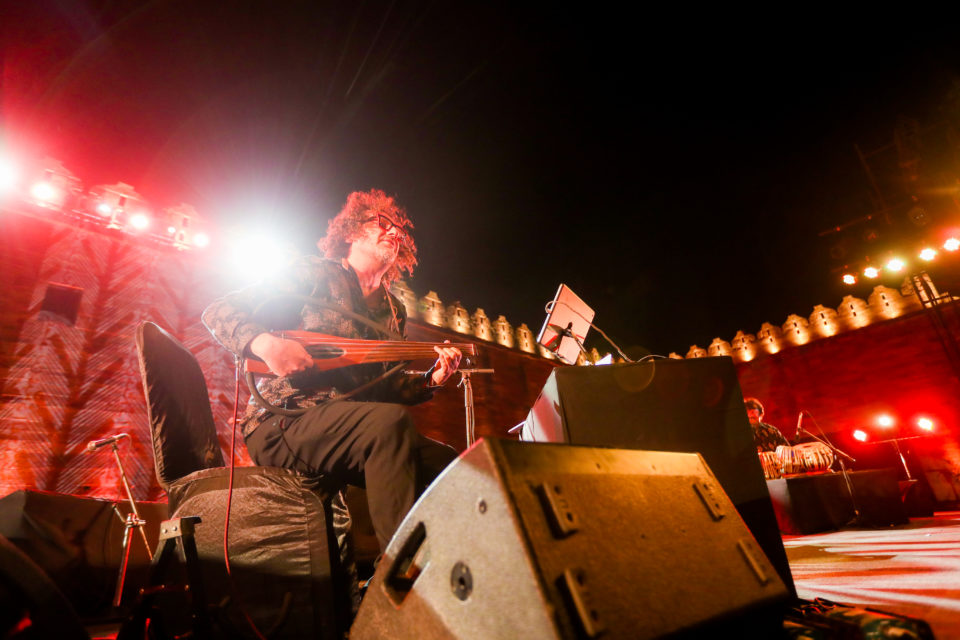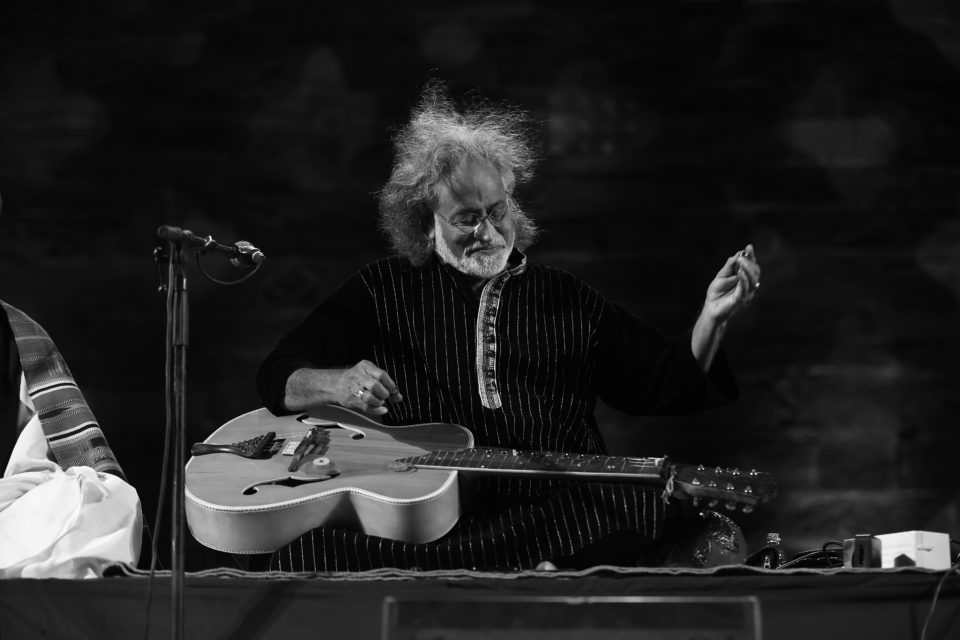Review: Sacred Spirit Festival Makes a Variety-Filled Comeback to Jodhpur’s Mehrangarh Fort
From electro-Carnatic jams to powerful Rajasthani voices, collaboration continues to be the big draw at the festival
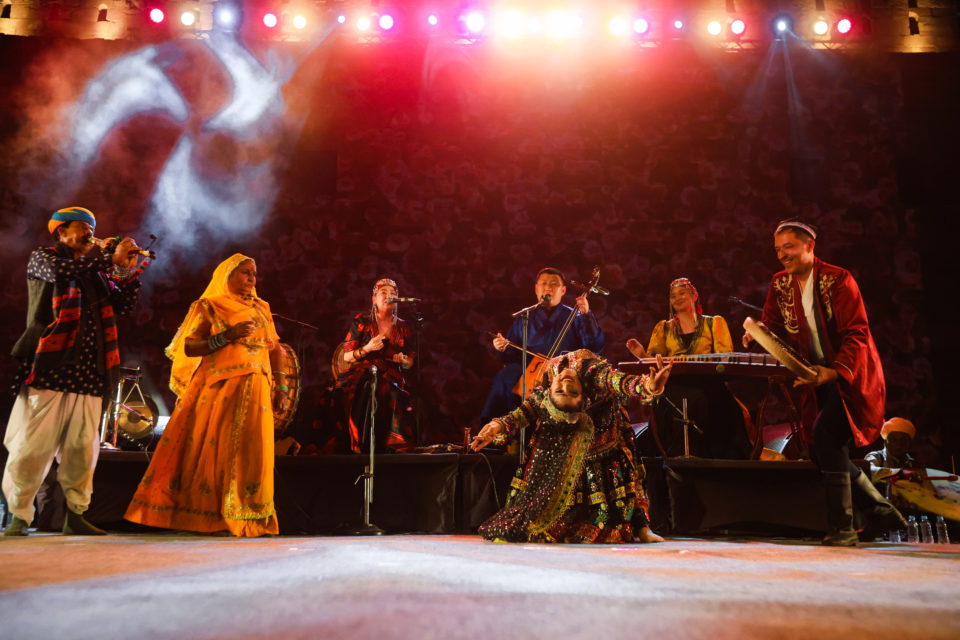
Hatan Ensemble, Uzbek dancers, Rajasthani dancers at Sacred Spirit Festival 2023. Photo: Mehrangarh Museum Trust
The world’s music returned to Mehrangarh Fort at the 14th edition of Sacred Spirit Festival in Jodhpur, held between February 10th and 12th and featuring local, nationwide and global artists across the board.
The festival tickets – which were priced at ₹8,000 and ₹4,500 – were sold out well before the lineup was out, which really does say something about the comfortable space that the event inhabits, catering mostly to older, affluent and tourist demographics.
With comfort often comes complacency, but the festival (presented by Mehrangarh Museum Trust) has slowly dodged any kind of lethargy in their programming. Their comeback edition after 2020, Sacred Spirit Festival did have a couple of artists omitted from the promised lineup but none that dulled the audience enthusiasm. From ambient/drone artist Loup Barrow to festival favorite and singer-composer Madan Gopal Singh and his Chaar Yaar Ensemble, Sacred Spirit Festival’s artistic director Alain Weber – profusely thanked by several artists at the start or end of their set – walks the balance between well-known, can’t-fail artists and experimentalists.
Through it all, like their counterparts in Jodhpur RIFF, collaboration is central to Sacred Spirit Festival. While the programming is not as demanding and high-energy as RIFF, there’s a charm in Sacred Spirit Festival’s measured pace and vision for artists. Whether it’s by the Jaswant Thada lake or the temple overlooking the entire city of Jodhpur, or even in the mighty Zenana Deodi courtyard and the sunny Chokelao Gardens, this festival has something for everyone and surprises in store for more.
A festival favorite and powerful collaborations
Day one of the festival started with a morning session at Jaswant Thada Lake, with Dada Khan, Sujaram, Dare Khan and Latif Khan performing meditative and soul-baring bhajans along with playful tunes as well.
Over at the Chokelao Gardens, Madan Gopal Singh and Chaar Yaar Ensemble proved just why they were invited back to nearly every edition of Sacred Spirit Festival over the decade-plus that it’s run. Precisely the kind of curation that you expect for an audience familiar with Indian and western music, Singh – joined by Deepak Castelino on the guitar and banjo, Pritam Ghosal on the sarod, and Amjad Khan on percussions – dove into Kabir songs and gave way for English songs as well. Castelino shone with songs like “Hallelujah,” “Knockin’ On Heaven’s Door” and “Imagine,” all of which is part of any Chaar Yaar performance, but it never fails to get the crowd going.

Another big draw who came in soon after was Sufi artist Sonam Kalra, her songs of devotion and self-belief had a mystic air to them, but she also gave the crowd a chance to get up and dance to “Aeri Sakhi” and “Chaap Tilak” and “Mast Kalandar.” Among the artists who propelled Kalra and her group’s performance were Rajasthani artists Anita Dangi, Prem Dangi, Chuge Khan and Jasu Khan.
The mood shifted for the evening session on day one, featuring composer Loup Barrow stood behind the sleek and mysterious-looking Cristal Baschet and churned out melodies and atmospheric flourishes for flautist J.A. Jayant and mridangam artist Akshay Anantapadmanabhan. Basing their performance off a 40-minute rehearsal, Carnatic music met drone to become something truly frenetic, weird and wonderful.
The local heroes
Just as Kalra was joined by Dangi and Rajasthani artists, a lot can be said about how Sacred Spirit Festival shines a decent amount of spotlight by inviting musicians from the state, regardless of how experienced or new they are to carrying on performing traditional music. Anuradha Pal’s Stree Shakti on day one brought in khartal player Gazi Khan Barna, morchang player Thanu Khan Barna and others for a massive ensemble on stage.
The day closed with a slightly delayed but captivating blend of Mongolian throat singing and music from the Hatan Women Ensemble, the Uzbek Bokhor Dance Company and Suva Devi leading the Rajasthani Kalbeliya dance troupe. The Uzbek dancers were a force of power and it all got tied together in a seamless display of Uzbek and Rajasthani dancers and musicians performing together, with the Mongolian artists patiently waiting their turn to fire off evocative, transportive tunes.
Spotlight on sound
Day two brought Rajasthani instruments to the front in a curated way, with groups taking the stage to showcase lesser-heard sounds from the double flute satara and the sarinda fiddle by Alsar Khan Langa. From reverence to fusion, the case for preserving the tradition of these instruments was made strongly.
The late morning performance at Chokelao Garden brought in Bengal powerhouse Swapan Das Baul with Arpan Thakur Chakraborty on dotara and Khokan Das on percussion. Swapan Das Baul had the audience clapping along right from the opening beat. He danced, strummed and bellowed his way through songs of humanity, going on to be joined by Talab Khan Barna, who both had rustic kind of vocals complementing each other.
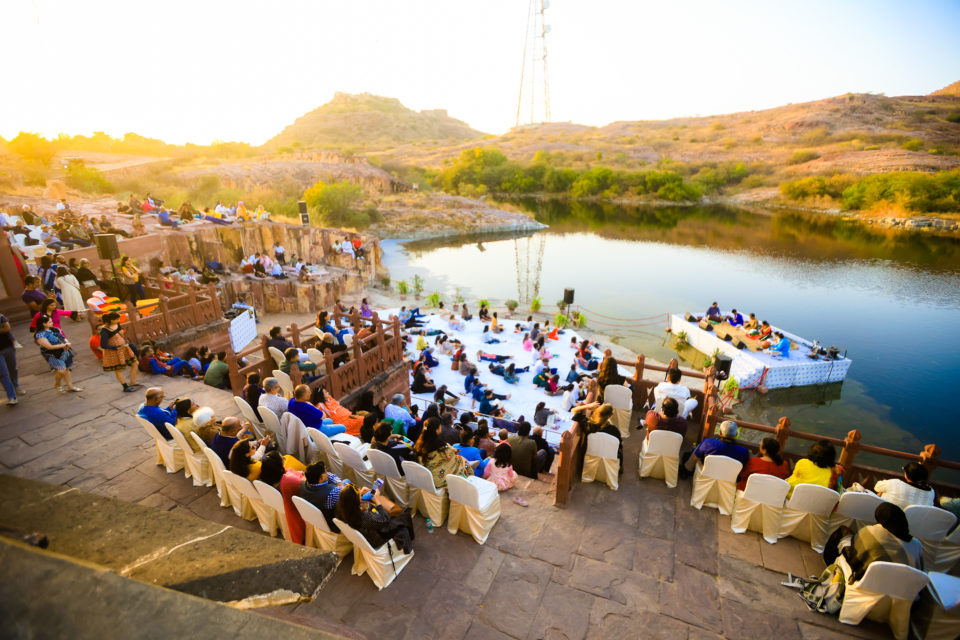
All in the family
While crowds have likely seen family lineages shine in Rajasthani folk music, Sacred Spirit Festival hosted the mandolin family of U.P. Raju, U. Nagamani, U. Jaya Vigneshwar and U.Subramania Raju. Joined by mridangam artist Madipakkam P. Suresh and ghatam artist N. Rajaraman, the lakeside stage was witness to mandolin virtuoso takes, with the family trading solos and also diving into more wavy, meditative sounds. They had a medley to top it all off, with “Moonlight Sonata” to and patriotic songs like “Vande Mataram” winning the crowd over.
The electric mandolin became a great offering and prelude to the desert slide guitar showcase from Pandit Vishwa Mohan Bhatt. But before that, there was violinist and composer Jyotsna Srikanth’s electronic fusion with Smadj, called Sangama. Featuring tabla artist Gurumurthy Vaidya, it was a trippy affair with Smadj’s cavernous soundscapes being almost contrasted by the versatile violin. The artists shared a bit of banter about understanding each other’s style of music, but clearly there were no gaps. At times erudite and at other times more journeying, Sangama broke away from sounding anything remotely traditional. Smadj brought an atmospheric edge to the set that was atypical and rock-informed at times, even though he’s behind the oud.
It was full house by the time Vishwa Mohan Bhatt with Justin Adams and Rajasthani artists Anwar Khan, Gazi Khan, Feiruz Khan, Ghewar Khan and Mehardeen Khan Langa took the stage. While Bhatt was sat centerstage for the opening pieces, the other artists were ready and awaiting cues.
Of the incredulous performers was Justin Adams and his electric guitar. Although he’s surely no stranger to sitting down amongst folk music heroes – his credits include Tinariwen and Juldeh Camara, plus Robert Plant – he brought in his riffs just to give the performance a gritty edge and groove when Bhatt would lock into a hypnotic style on his mohanvina. All in all, it was distilled fusion that moves. Bhatt conducts his stage mates, pointing to each one and directing the flow, even having Adams perform one of his songs and later working in a snippet of “Meeting By the River” off the Grammy-winning 1993 album of the same name, made with American guitarist Ry Cooder.

As attendees made their way down to lifts, food counters and even walked the winding path out of the Mehrangarh Fort, Sacred Spirit Festival closed proceedings with a high-energy electro-fusion set by Smadj and Rajasthani artists at Salim Kot. Smadj twisted and turned with bassy and glitchy flips of folk songs, being joined by traditional instrumentalists.
Running for over a decade now, Sacred Spirit Festival is, like all festivals, likely facing similar challenges as they progress through the years. There are no doubt questions of spending and curating the right kind of acts, especially when other festivals can also lay claim to a similar line of programming. Nevertheless, Sacred Spirit Festival scored well on this front, leaving plenty of room for more artists to find powerful, one-of-a-kind collaborations within the walls of the fort.
Photos: Mehrangarh Museum Trust



